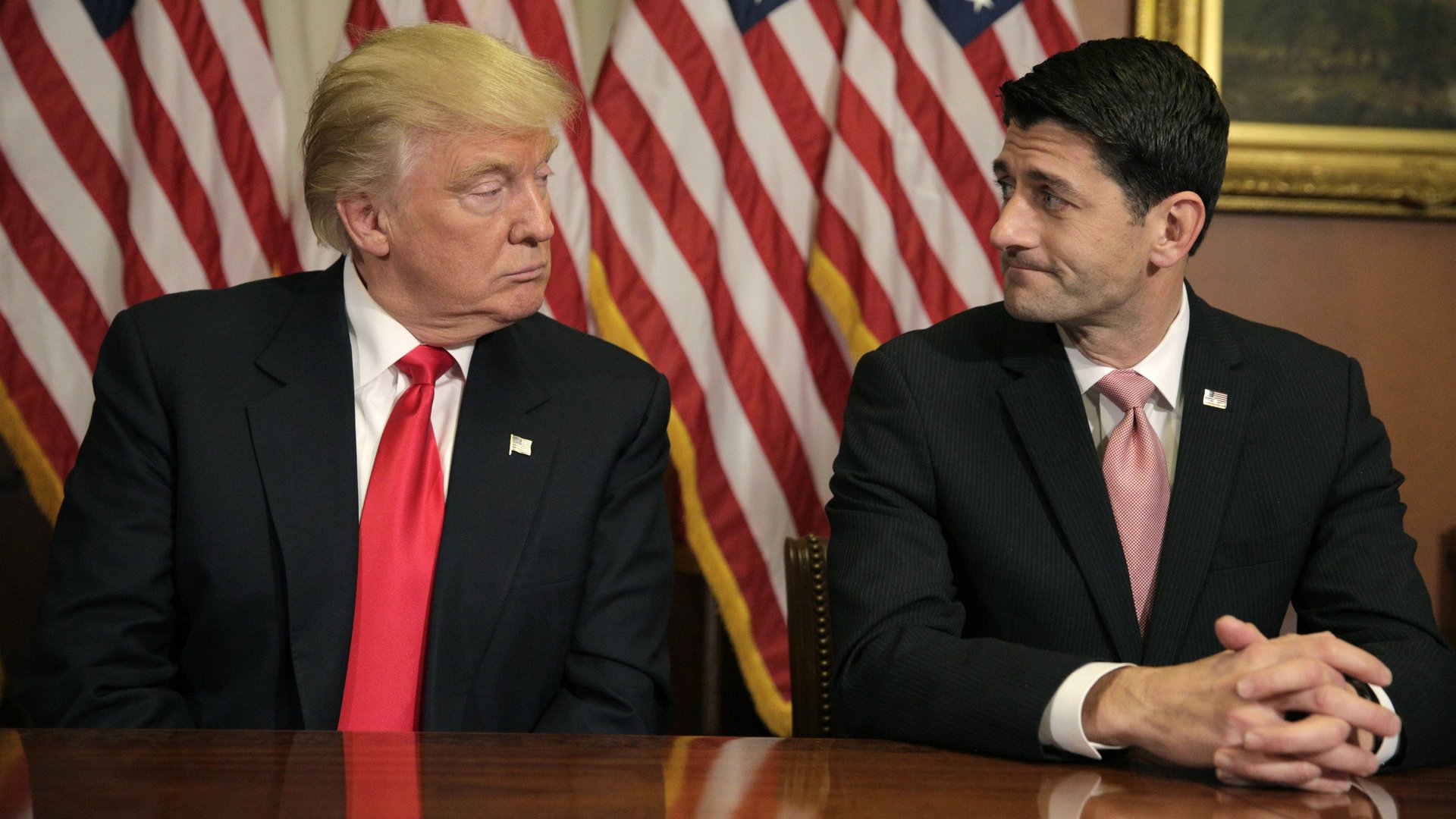Trump’s 2020 reelection campaign has already started
The apparent paradox of electing a businessman who has no elective office experience and lots of liabilities can boggle one’s mind. But we can clear the confusion by looking at Donald Trump’s one and only goal from now on.


The apparent paradox of electing a businessman who has no elective office experience and lots of liabilities can boggle one’s mind. But we can clear the confusion by looking at Donald Trump’s one and only goal from now on.
“I am saddened, but not surprised.” That’s the cliché du jour after last Tuesday’s vote, and, one fears, it will remain so for many weeks to come. We’re also saddened—but certainly not surprised—to see so many forecasters of yesterday’s weather now tell us why and how Hillary Clinton lost to Donald Trump. We all should have seen it coming—these Chinese flag makers did.
Post-Trumpem forensics range from identity politics to economics, from gender trouble to bad polling techniques, and FBI conspiracies. For completeness, CNN generously lists 24 theories that explain why Trump won. Why not 25? As the author of the CNN article obligingly notes:
“For now, though, we are left to sketch the first draft of history. And, like so many rough outlines, this one is a little messy.”
One fears this is not written with tongue deeply set in cheek.
On a similar note, there must be a special humor prize for a post that condemns the unbearable smugness of the press. Written without discernible irony, the piece appears on…the CBS News site, a company whose CEO, Les Moonves, called Trump’s run a “damn good thing for CBS.”
Yet another prize should be handed to David Plouffe who, in a New York Times op-ed, establishes his credentials by telling us that he “managed one Obama presidential campaign and oversaw another from the White House” and then recites the eight things (no less) that he got wrong about the election. My favorite Twitterer, the erudite and epigrammatic @counternotions (aka Kontra), has this sharp retort for Plouffe’s whitewashing:

Sometimes it takes more than one torpedo to sink a dreadnought, but 24 theories or eight factors have no actual explanatory power. They are, in Bill Gates’ vocabulary, random, worthless idea noise.
Fortunately, we have a few worthy explainers, people who told us in advance that Trump would win and, more importantly, why and how.
Last summer, Michael Moore laid out an eloquent (he always is) and coherent (he sometimes isn’t) account of Trump’s plan to conquer the Rust Belt swing states. For good measure, this committed Democrat points the finger at his candidate [as always edits and emphasis mine]:
Let’s face it: Our biggest problem here isn’t Trump—it’s Hillary. She is hugely unpopular—nearly 70% of all voters think she is untrustworthy and dishonest. She represents the old way of politics, not really believing in anything other than what can get you elected. That’s why she fights against gays getting married one moment, and the next she’s officiating a gay marriage. Young women are among her biggest detractors…]
Then we have Scott Adams, the creator of the extremely successful Dilbert comic strip (and a trained hypnotist). Adams began projecting a Trump victory eighteen months ago and explained, in a series of almost daily blog posts, that this unorthodox, inexperienced, and heavily-baggaged candidate would win due to his talent as a “master-persuader.” In Adams’ view, Trump won the Republican nomination and then the presidency by basing his campaign not on rationality but on appeals to the emotions. Trump’s victory wasn’t the landslide that Adams predicted in a March 2016 Washington Post article, but it was an earthquake.
Today, there is much concern about the impact of a Trump White House on the economy, foreign affairs, social programs, immigration… Will the president elect actually do all the things he promised—or threatened—to do?
Last Thursday, sufficiently sobered up, a simple palliative presented itself: Forget everything Trump said during the campaign. Dwell, instead, on his most important goal: How do I get reelected? This is a man who doesn’t like to lose, and a one-term presidency would be the ultimate disgrace. He needs to put yet another Trump sign on a building—the White House this time.
Imagine a map of the US on Trump’s infamously messy desk:

The states he swung into the red—Wisconsin, Iowa, Ohio, Pennsylvania, Florida—are clearly marked, as are his winning Electoral College numbers. The numbers for the popular vote, which Clinton won by a 0.47% margin—are less pronounced, but, for Trump, they must be galling. [Votes are still being counted, Hillary’s margin could approach two million votes, 1.6%.]
This is what’s on his mind, his North Star. From now on, it occurred to me, everything he says and does will have one and only one aim: Trump 2020.
And what do we hear less than a week after Election Day? Parts of Obamacare are likely to be kept intact. The Wall at the Mexican border? Newt Gingrich, a key Trump ally, calls it a “great campaign device,” adding that Trump would probably have a hard time getting Mexico to pay for it.
We can be sure to see more “nuances” emerge as inauguration day approaches. What Trump said during the campaign was what he needed to say to get elected. That’s now void. As French politicians like to say, campaign promises only bind those who believe them. Let’s erase from our minds anything Trump said about taxes, building iPhones in the US, forcing Ford to bring Mexico production back to the US, Supreme Court Justices, trade wars, vetting Muslims, Defense spending…
From now on, we only need this simple prism to look at what Trump says and does: His 2020 reelection campaign. It has already started.